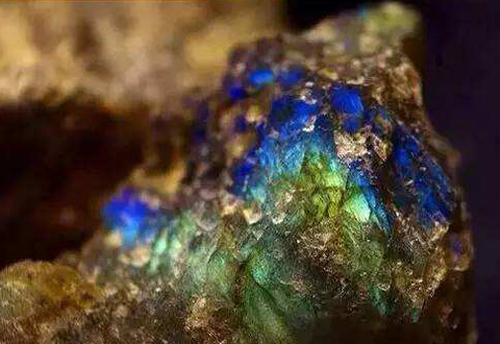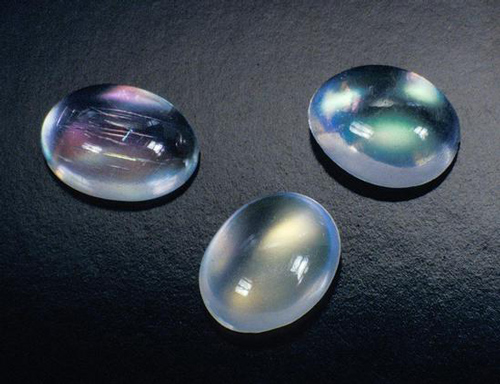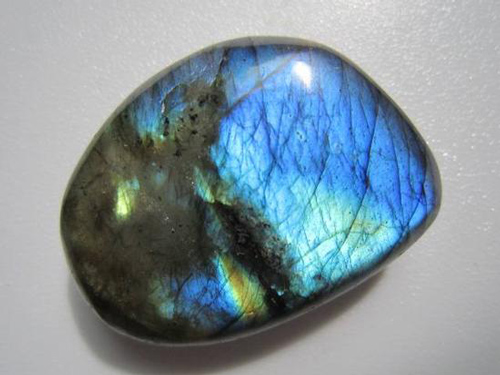Can you distinguish between Labradorite and Moonstone?
There are two kinds of gemstones with special optical effects on the jewelry market that are often confused, that is, moonstone and labradorite. These two strange gems not only have a similar appearance, but the names are also extremely similar. Many people have a headache for them, and they are stupid and unclear. So now, what are the differences between moonstone and labradorite?
The difference between moonstone and labradorite
Two gems of the same family
Moonstone and labradorite belong to a common family, the Changshi people. The feldspar is the most widely distributed and most common silicate mineral on the earth. It has a large family and many members. It is mainly divided into potassium feldspar (alkali). Sex feldspar), plagioclase and celsian feldspar, mainly related to gems are the first two. Among them, moonstone belongs to the class of potassium feldspar (alkaline feldspar), and labradorite is a member of plagioclase.

Confusing name
Moonstone is named after moonlight and moonstone because its surface is often accompanied by faint floating brilliance, which is similar to moonlight. Labradorite is known for its floating color halo on its surface, and is also known as rainbow labradorite or spectroscopic stone when the surface is halo. Many people in the market, including some merchants, can't tell the difference between them. They often sell Labradorite as "moonstone" and "Yuecai Moonstone". The names of the two are often confused.

Distinctive optical effects
Both moonstone and labradorite have special optical effects, and the surface often floats with fascinating brilliance, but the optical effects of the two are completely different and unique. This also provides strong evidence for distinguishing between the two.
Moonlight effect: When the moonstone is turned, white-blue floating light appears on the surface, such as the moonlight, which is called the moonlight effect. This is because the inner feldspar and albite layered alternately, so that the visible light incident on the inside of the gemstone is scattered. When there is a cleavage plane, the light interferes or diffracts, and the comprehensive effect of the gemstone on the light is created. The moonlight effect. According to the color of the surface of the moonstone, it is divided into white moonlight, orange moonlight, blue moonlight, etc., among which the blue moonlight has the highest value.
Halo effect: When the labradorite is rotated, the surface can be blue, green, orange, yellow, purple and red. The color of the same part of the gemstone changes constantly during the rotation. It is called the halo effect. The reason for this is mainly caused by the interference of the polycrystalline thin layer of the inside of the gemstone on the light. Sometimes the same piece of labradorite surface can appear in a variety of faint colors at the same time, very gorgeous and charming.

The difference between moonstone and labradorite
Distinguishing features of the two
Moonstone and labrador are similar in appearance, but there are some obvious differences. The base color of moonstone is generally shallow, often colorless or milky white, and is transparent-translucent. However, the base color of labradorite is often deep, mainly gray, brown, black, and the transparency is also poor, mostly translucent-opaque. At the same time, most of the labradorite has a large number of needle-like, plate-like black inclusions. Mostly it is goethite or ilmenite inclusions. At the same time, the blue smog on the moonstone surface is lighter, while the labradorite blue smudge is more vivid.
The difference between moonstone and labradorite, is your point clear now? At present, the domestic jewelry market is more familiar with the moonstone than the labrador, and the quality of the moonstone is higher. The labradorite needs to be further promoted in the future, which is more familiar to people and makes it more Many people can distinguish between the two.
This series products are the block and random copolymers made from allyl alcohol, EO and PO. And they are main materials for synthesizing polyether polysiloxane. Polyether modified polysiloxane can dissolve in the water and oil, and it is easy to regulate. It has all the excellent performances of the traditional polysiloxane product, in the meanwhile, it has the function of the lubricating, softening, good spreading and emulsification stability offered by polyether chains. And it can be used as PU foam stabilizers, textile auxiliary, oil field demulsifier, cosmetic auxiliary, coating leveling agent, detergent, defoaming agent and emulsifier etc. the copolymer of the polyether reacting with hydrogen containing silicone oil can be applied as PU foam stabilizers , textile auxiliary, oil field demulsifier and emulsifier etc..
Polyether Polyols,Polyether Polyol Uses,Polyether Triol,Polyoxyalkylene Polyol
NINGBO LUCKY CHEMICAL INDUSTRY CO., LTD , https://www.chinaluckychem.com